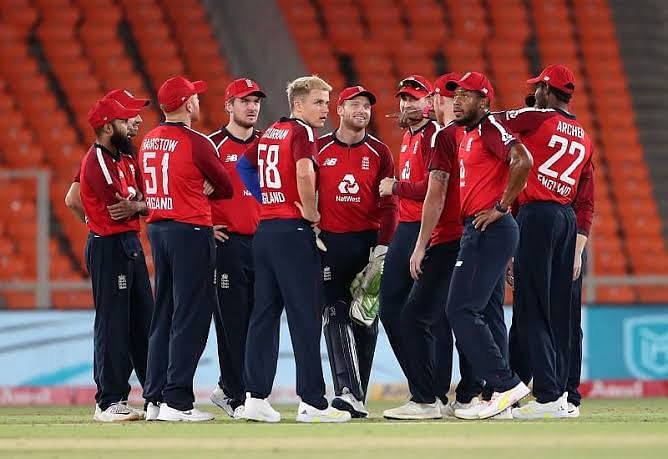Ever since the inception of the game officially back in 1877, the game of Cricket has followed a number of rules and the sports can also bask in the fact that it is one of the few sports that have managed to stay true to its tradition and held together with the rules and regulations intact.
However, the Gentlemen’s game is a bit complex in terms of the set of rules associated, we as cricket lovers have an opportunity to learn new boundaries of the game on regular basis, giving us yet another reason to love the sport of bat and ball.
With over 42 laws stated in the Rulebook. Today, Cricwizz takes a look at the 5 answers which every cricket follower should know.
1) Why is the length of the cricket pitch 22 yards in length?
To answer this question, we need to first understand code 1744 of cricket which states the permitted dimensions of the cricket pitch and also the equipment used in the game. The rectangular pitch measures 22 yards in length as Cricket was initially played by the Britishers and they used imperial units for measurement. Imperial units involved- Pint, chain, and a furlong.

The overall ground size could not be fixed upon and for that reason, they decided to set a standard dimension for the pitch. The administrators back then decided to implement the concept of one chain, which is 1/10th of a furlong otherwise 22 yards (2012 cm).
2) Why do they switch ends after every over?
At the early stages of the sport, the concept of switching sides was not much in implementation. But as and when the game started to develop into commercial stages the idea of switching ends after every over was gradually implemented across all countries and by 1909, when the ICC was formed, it was added into the law books.
The players switch sides mainly for three reasons- the main objective being to make the game fair and reduce any external advantages such as wind, which at times affected the bowlers. Another reason was the uneven dimensions of ground, which forced the implementation of the law.
Further, the pitch conditions were taken into account, the continuous play from one side of the pitch deteriorated the pitch on one side which would result in one side having more spin and bounce. In addition, the concept came as a boon to the spectators in terms of the viewing angles.
3) Why are there no regulations in the size of the ground?
The reason for no regulations to the size of the ground is mainly due to the fact that the centerpiece (pitch) occupies a rectangular portion at the very center of the ground. Therefore, no regulated dimensions were issued but the law does say that no boundary is to exceed 82.29m from the center of the pitch.
The ICC law for dimensions of the ground states:-

The playing area shall be a minimum of 137.16 meters from boundary to boundary square of the pitch, with the shorter of the two square boundaries being a minimum of 59.43 meters. The straight boundary at both ends of the pitch shall be a minimum of 64.00 meters.
Do you know which is the largest cricket ground by area? Well, it is the Melbourne Cricket Ground (MCG) which measures a playing area of 172.9m*147.8m diameter.
4) Why is cricket known as the gentlemen’s game?
Cricket was a game originally played in England especially by the aristocrats (the class who considered themselves of the highest order). These aristocrats held together a supreme compilation of unwritten codes and the game was played with the highest order. They were also known as Gentlemen and for that reason, it is called the Gentlemen’s game.
Yes, there were a number of sports played back then like football, boxing, and tennis, etc. But, Cricket was the sport adopted by the aristocrats back in the time and the conduct also required the individuals to play the game with the highest honesty and morality as there were no written codes and laws to monitor the proceedings.
Is the game of cricket still doing justice to its address in the modern era? A debatable topic right?
5) Why are umpires still in use when there is enough technology?
Over the period of time, the game has evolved and so has the technology associated with the game. We do have score predictors, DRS (Decision Review System), Snicko, and hotspot which have made the work of the on-field umpires much easier and also helped the cricket world in maintaining fair gameplay.

But, can we really play a game without the umpires?
The answer is a big NO. The various reasons as to why we are not yet ready to conduct the game without the intervention of an umpire. The condition of the ball is a factor that plays a huge role in the game and we do need an umpire to inspect and track the condition of the ball throughout the gameplay.
Other reasons include:-
* Spotting occasions of cheating by the players (ball-tampering, use of foreign bodies on the ball, etc)
* Resolve on-field spats between the players and help in conducting a smooth gameplay
* Decision regarding extras
Moreover, who can deny the fact that the umpires do add life to the game and keep the moments alive. For that reason, umpires are a salient part of the game even though we have advanced far in technology.
The sport does have numerous interesting rules and laws attached to it. How many of you knew that the umpires do have the right to conduct play without bails in situations where the wind plays a factor? Interesting right? Do check out our article on the lesser-known cricket rules to find out more intriguing rules.
Which of the answers did you find new? Also, comment below if you questions related to cricket that are unanswered.






